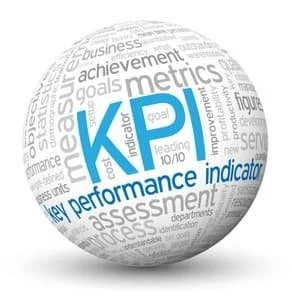Imagine calling your bank’s support line at lunch and waiting 17 minutes to hear a human voice. Or picture a nurse in a hospital unable to move forward until lab results arrive hours later. These aren’t rare cases. They’re systemic delays that customers and employees endure daily, and they come at a cost. 73% of consumers abandon purchases after just five minutes of waiting* and 84% of patients say delays negatively impact their care experience**. In both cases, waiting doesn’t just frustrate, it silently undermines performance and loyalty.
In today’s digital-first world, this invisible lag costs far more than time: it drains productivity, drives abandonment, and erodes service outcomes. Across industries, these moments of delay translate into lost revenue, missed opportunities, and rising operational waste. Fortunately, AI offers more than visibility. It offers the power to eliminate waiting at the source.
* 60+ Queue Management Facts and Statistics You Should Know in 2021 (www.qminder.com) **High Cost of Long Wait Times (www.phreesia.com)
Smart Lean: Eliminating Waiting with AI
Restoring Flow: How Lean and AI Transform Service Performance
Where Waiting Shows Up in Service Operations
Modern businesses are data-driven, yet many are still time-poor. Here’s where waiting tends to hide in service organizations:
Administrative bottlenecks: Approvals stuck in inboxes, escalations waiting on management.
System delays: Slow-loading platforms, asynchronous batch processes, or server lag during high traffic.
Customer handoffs: Transfers between teams or channels (e.g., chat to phone) that leave customers repeating themselves.
Workforce idle time: Employees unable to proceed due to lack of information, tools, or dependencies on others.
These frictions build up invisibly, stalling service flow and increasing overall lead time. And while you can spot some of them using the checklist above, identifying the symptoms is only the first step. To truly eliminate operational drag, we need to understand why these slowdowns persist in the first place.
Finding Hidden Delays in Your Operation
Before you can solve the problem, you need to spot it. Here’s a quick diagnostic checklist to identify hidden slowdowns in your service environment:
Are approval chains longer than two layers?
Do customers switch channels (e.g., chat → email → call) to resolve the same issue?
Is employee time spent chasing data, updates, or decisions?
Are triage and escalations manual and role-based?
If you answered yes to two or more, you’re likely sitting on avoidable operational drag.
Spotting symptoms is just the beginning. Eliminating recurring wait time means addressing the root causes beneath them.
Root Causes: What’s Slowing You Down?
Waiting in service operations often stems from poor system coordination, fragmented processes, and human dependency. Specifically:
Disconnected Systems
Legacy platforms, siloed databases, and incompatible tools make it hard for information to flow seamlessly. Employees wait for data to sync, approvals to pass through, or systems to respond.Manual Decision Dependencies
Many service processes rely on human approvals, triage, or classification even for routine tasks. This creates delays, especially when workload spikes or people are unavailable.Unclear Ownership or Escalation Paths
Requests often get “stuck” because no one knows who should act next, or responsibility isn’t clearly defined across teams or channels.Inefficient Workflows
Rigid or poorly mapped workflows (e.g., excessive handoffs, lack of automation) lead to bottlenecks, especially when exceptions or rework occur.Reactive Scheduling and Load Balancing
Without predictive tools, staffing and resource allocation are often misaligned with actual demand, leading to idle time for both customers and employees.
You can’t fix waiting waste by layering AI on top of broken processes. Before automation delivers results, the underlying system must be Lean. That means eliminating non-value-added steps, clarifying decision rights, and designing workflows for flow, not friction. Only then can AI amplify what works, rather than accelerate what doesn’t.
Accelerating Flow: How AI Removes Operational Slowdowns
Artificial Intelligence, when integrated with Lean principles, turns time loss into flow gain.
Below are targeted AI applications that reduce or eliminate waiting:
1. Predictive Scheduling
Machine learning models analyze historic patterns to forecast peak loads, staffing needs, or system usage. This allows teams to:
Preemptively adjust staffing before queues form.
Schedule tasks during system off-peak times to avoid slowdowns.
2. Intelligent Workflows
AI-powered workflow automation routes requests, escalations, or documents dynamically—based on urgency, workload, or policy rules. This bypasses manual steps and eliminates bottlenecks like:
Requests “stuck” in queue due to role-based delays.
Waiting for human triage when AI can classify and prioritize instantly.
3. Real-Time Monitoring & Alerts
AI can flag emerging delays in workflows or system response times. Whether it’s detecting slow-loading pages or processing lags, these systems:
Alert teams before service-level agreements (SLAs) are breached.
Trigger contingency actions (reroutes, escalations, etc.) before customers experience a slowdown.
4. Virtual Agents & Self-Service Interfaces
LLM-powered chatbots and voice assistants resolve common queries without involving agents.
Available 24/7, they deflect repetitive tickets and slash wait times.
Capable of handling complex requests in natural language.
5. Intelligent Queue Management
AI reorders tickets dynamically based on urgency, SLA risk, or customer value.
Prioritizes VIPs or urgent requests to meet service expectations.
Continuously reshuffles workloads to minimize idle time and backlog.
6. AI-Augmented Decision Support
In complex workflows, AI speeds up human decisions by providing real-time, context-aware suggestions.
Cuts down time spent on research, cross-checks, or second opinions.
Ideal for domains like healthcare, finance, and legal reviews.
7. RPA Triggered by AI Events
AI can launch robotic process automation (RPA) bots as soon as certain conditions are met—no human needed to press “go.”
Routine processes like approvals, updates, or record entries happen instantly.
Frees employees from waiting for system or human handoffs.
Of course, automation isn’t a magic wand. Even the best AI systems can backfire if applied to unstable processes.
AI doesn’t fix broken processes. It scales them.
Make it Lean first, or risk making things worse, faster.
Avoiding Pitfalls: What Not to Automate Blindly
AI can accelerate flow—but only when used with intention. Here are common missteps organizations make when trying to eliminate waiting through automation:
Mistaking speed for urgency: Automating a broken or slow process without triage logic can overwhelm downstream teams rather than improve throughput.
Forgetting escalation logic: AI that routes tickets but doesn’t escalate exceptions can still trap work in limbo.
Ignoring human trust: Even accurate AI can be underused if frontline staff don’t understand or trust its recommendations.
Before automating, validate the process. Ensure it's Lean, mapped, and managed. Otherwise, AI will simply amplify inefficiency instead of eliminating it.
Measuring the Impact: Wait Time as a KPI
While technology enables us to act faster, it’s measurement that reveals where time is still lost. One of the most critical yet underutilized KPIs in service operations is Average Wait Time (AWT): the time a customer or task spends idle before being addressed. High wait times correlate directly with reduced customer satisfaction and service efficiency, yet many organizations don’t track it consistently. 69.4 seconds was the average time a caller waited to get connected to a live agent in 2023*.
By embedding AWT into performance dashboards, alongside CSAT, SLA compliance, and first-contact resolution, organizations can pinpoint friction, prioritize interventions, and quantify the impact of AI and Lean improvements.
* Ozonetel, State of the Contact Center Report 2023–24
What You Gain When Flow Replaces Friction
Reducing the waste of waiting delivers measurable performance improvements:
Faster lead times: Processes move forward without delay or dependence.
Higher utilization: Teams spend less time idle and more time adding value.
Improved Overall Equipment Effectiveness (OEE): In operations, less waiting means better equipment and workforce efficiency.
Enhanced customer experience: Wait time is a major driver of customer dissatisfaction, reducing it increases loyalty.
Real-World Examples
SickKids Reduces Psychiatric Wait Time by 55% with AI
The Hospital for Sick Children (SickKids), one of Canada’s leading pediatric hospitals, faced mounting challenges in its emergency department, particularly in triaging mental health cases. Patients in crisis often waited hours before receiving a psychiatric consultation, creating delays in care and placing additional strain on emergency room staff.
To solve this, SickKids implemented Hero AI, a Toronto-based health tech startup platform built on Microsoft Azure. The system analyzes real-time triage data and uses predictive models to identify high-risk mental health cases. It then instantly notifies on-call specialists, bypassing traditional manual escalation and enabling faster care delivery.
Results:
Psychiatric consult wait times dropped by 55%
Emergency department gained 200+ hours of capacity over six months
Faster routing enabled early specialist intervention for high-risk youth
“We’re going to see a world where clinicians have AI Copilots by their side, helping them to care for their patients when they’re on shift.”
-Dr. Devin Singh, CEO & Cofounder, Hero AI
By automating triage and alerting workflows, Hero AI eliminated a critical waiting bottleneck in SickKids’ emergency operations, helping clinicians respond faster and improving outcomes for vulnerable patients.
“We’re going to see a world where clinicians have AI Copilots by their side, helping them to care for their patients when they’re on shift.” Dr. Devin Singh, CEO & Cofounder, Hero AI
Sources:
Microsoft, “Hero AI Innovates with Azure AI, Reducing Patient Waiting Times by 55%,” 2025.
Technology Record, “Hero AI reduces patient waiting times by 55 per cent with Azure-powered platform,” March 12, 2025.
Toronto Star, “This Toronto doctor built an AI app to help the ER triage system. Now SickKids is using it,” November 2023.
Ascendum Cuts Troubleshooting Time by 96% with AI
Ascendum, a global distributor and authorized service provider for brands like Volvo Construction Equipment, faced persistent challenges in its field service operations due to the growing complexity of machinery and the vast amount of unstructured technical documentation. Field technicians often spent up to 30 minutes diagnosing issues, resulting in significant equipment downtime and customer dissatisfaction.
To address this, Ascendum partnered with McKinsey & Company and Salesforce to develop a generative AI solution integrated into their Salesforce Service Cloud. This tool can search more than 14,000 technical documents in real time, helping service agents identify problems and solutions in seconds.
Results:
Troubleshooting time dropped from 30 minutes to under a minute
First-contact resolution rate improved by 50%
Customer downtime was significantly reduced, saving clients between $5,000 and $12,000 per hour
By removing delays in diagnostics and decision-making, the solution helped eliminate a major source of waiting waste in Ascendum’s service model, benefiting both technicians and customers.
Sources: McKinsey & Ascendum Websites
Conclusion: A Competitive Edge Through Smart Flow
Lean and AI, when combined with intention, don’t just remove waste, they create flow. Eliminating waiting enables companies to become more responsive, agile, and aligned with customer expectations. In a world where speed equals value, AI offers the tools to optimize every second.
By proactively addressing the waste of waiting with AI-enhanced strategies, businesses not only boost internal efficiency but also deliver superior outcomes to customers: on time, every time.

@ 2025 Lean Bizness Inc. | Strategy Through Execution
Based in North America | Working with clients across North America and internationally
[ Privacy Policy ] [ Terms of Use ]










